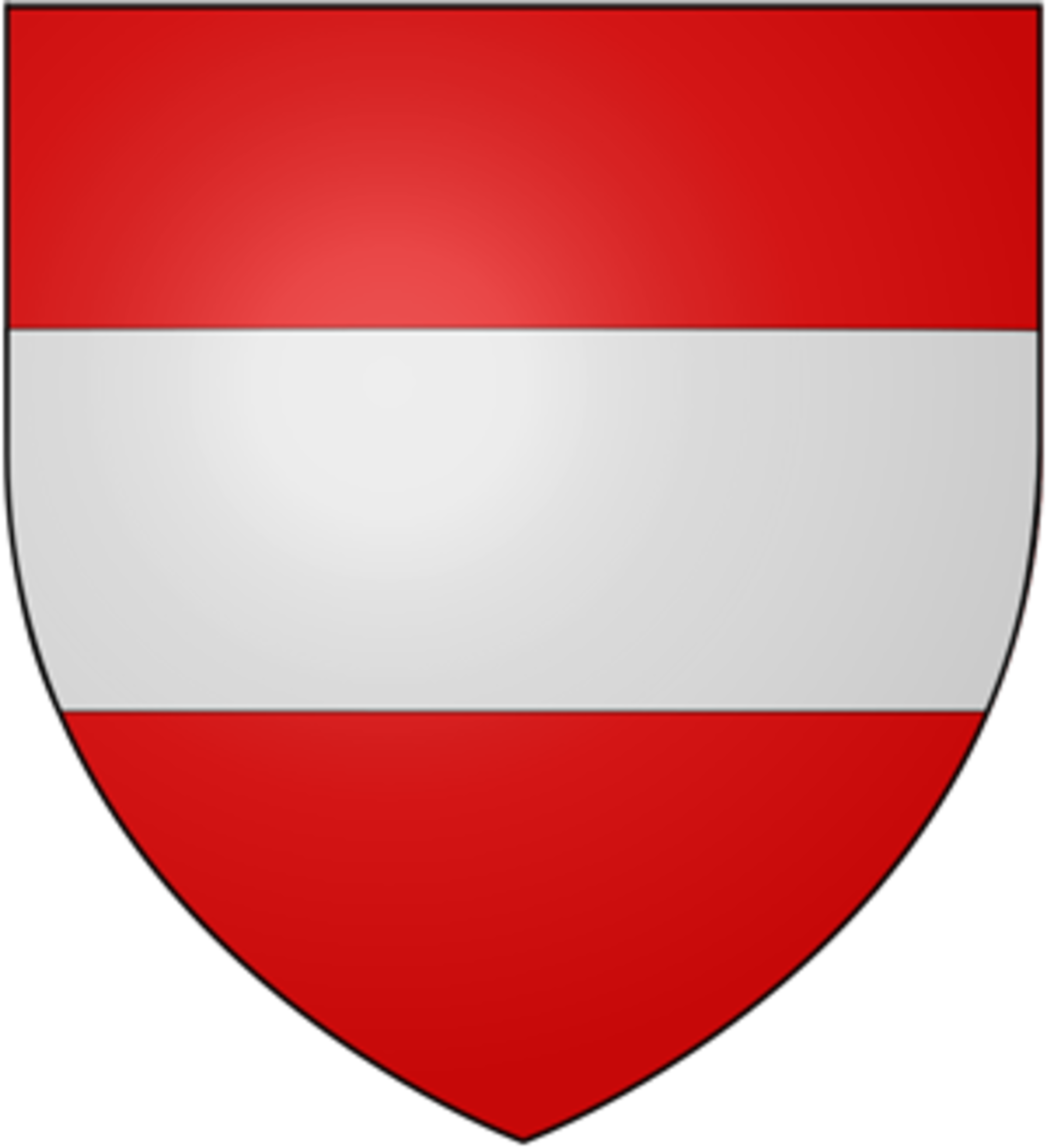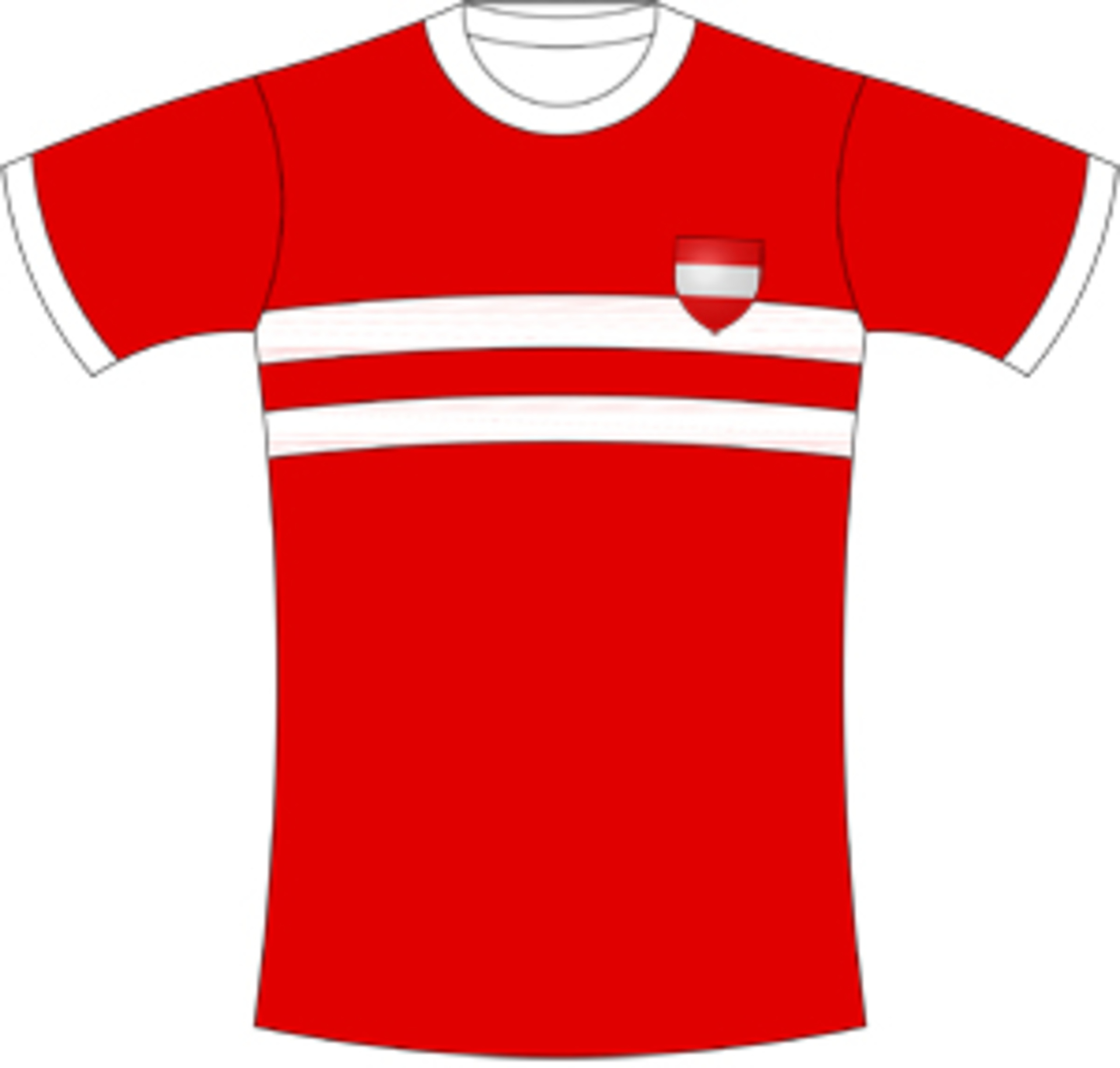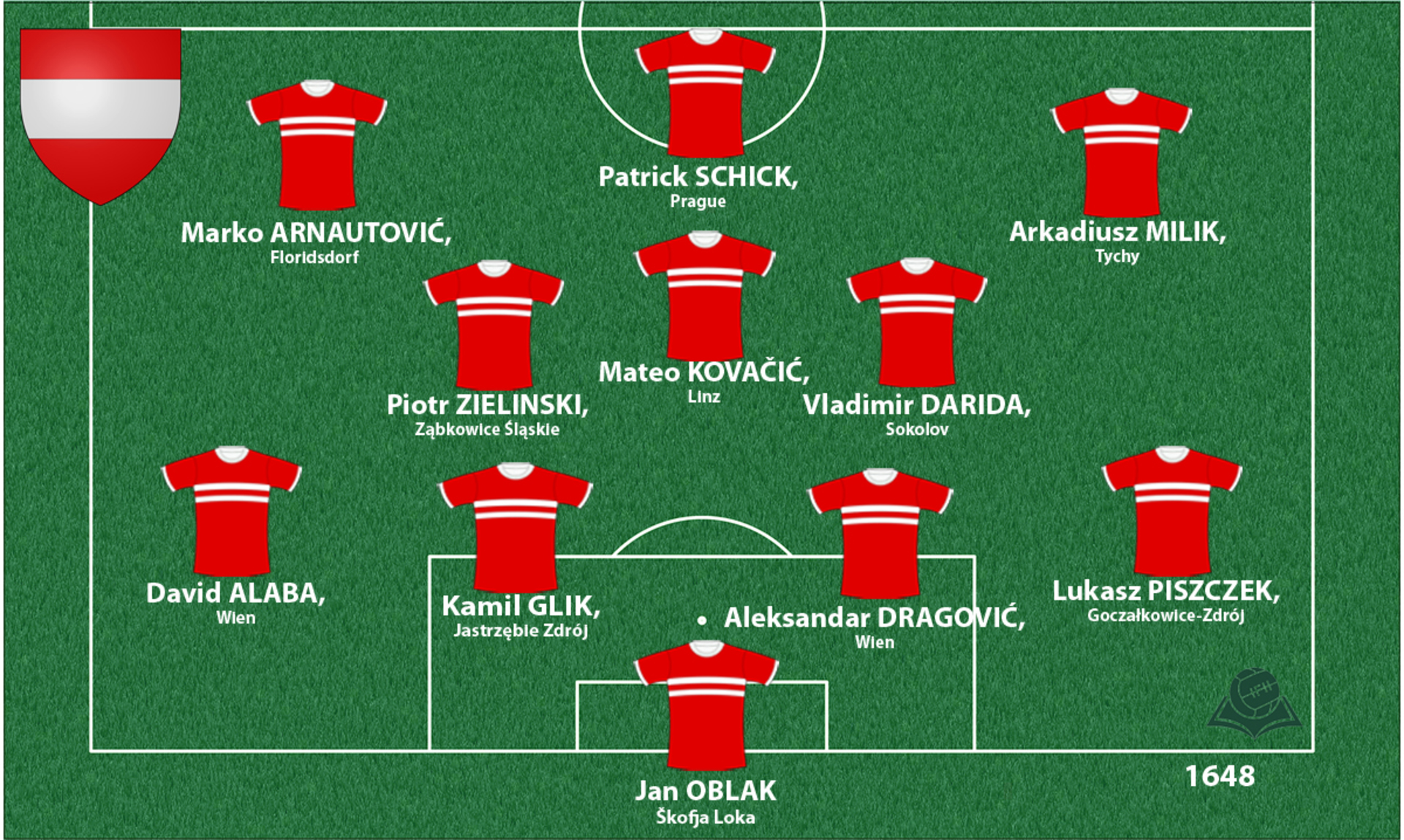Habsburg Hereditary Lands
The Habsburgs family were had received many permanent estates in the territory of Austria or Osterreich (Eastern Frontier Mark of the Empire) in the 13th century.From then they would called the Habsburg or the Hereditary Lands. Consequently, the terms Austrian and Habsburg will become synonymous.

Coat of arms

Shirt
| Position | First name | Last name | Mjesto rođenja | Like | Dislike | |
|---|---|---|---|---|---|---|
| GK | Jan | OBLAK | Škofja Loka |
45 |
7 |
|
| GK | Petr | CECH | Plzeň |
10 |
0 |
|
| DC | Aleksandar | DRAGOVIĆ | Vienna |
7 |
4 |
|
| DC | Kamil | GLIK | Jastrzębie Zdrój |
11 |
0 |
|
| DC | Kevin | WIMMER | Wels |
1 |
0 |
|
| DC | Kevin | DANSO | Voitsberg |
1 |
0 |
|
| DLC | Martin | HINTEREGGER | Feldkirchen in Kärnten |
0 |
0 |
|
| DRLC | Tomas | KALAŠ | Olomouc |
5 |
1 |
|
| DR | Lukasz | PISZCZEK | Goczałkowice-Zdrój |
14 |
3 |
|
| DR/MR | Pavel | KADERABEK | Prague |
1 |
0 |
|
| DL | Christian | FUCHS | Neunkirchen |
9 |
5 |
|
| DL/MLC | David | ALABA | Vienna |
28 |
3 |
|
| DMC | Piotr | ZIELINSKI | Ząbkowice Śląskie |
10 |
2 |
|
| DMC | Vladimir | DARIDA | Sokolov |
1 |
0 |
|
| MC | Guido | BURGSTALLER | Villach |
0 |
0 |
|
| MC | Jasmin | KURTIĆ | Crnomelj |
1 |
1 |
|
| MC | Konrad | LAIMER | Salzburg |
1 |
1 |
|
| MC | Mateo | KOVAČIĆ | Linz |
20 |
0 |
|
| AMC | Borek | DOCKAL | Městec Králové |
1 |
0 |
|
| AMRLC | Ladislav | KREJCI | Prague |
1 |
0 |
|
| AMRL | Alessandro | SCHOPF | Umhausen |
0 |
0 |
|
| AMRL | Jakub | BLASZCZYKOWSKI | Truskolasy |
3 |
0 |
|
| SS/FC | Lukas | PODOLSKI | Gliwice |
12 |
1 |
|
| FRLC | Arkadiusz | MILIK | Tychy |
15 |
3 |
|
| FRLC | Marko | ARNAUTOVIĆ | Wien |
8 |
3 |
|
| FC | Andrea | PETAGNA | Trieste |
1 |
4 |
|
| FC | Patrik | SCHICK | Prague |
6 |
4 |
|
| FC | Robert | BERIĆ | Krško |
0 |
0 |
(Today part of: Austria, Slovenia, Czech Republik, Trieste , Silesia in Poland)
During the Middle Ages until the 17th century the Habsburg Hereditary Lands (Lower Austria, Upper Austria, Salzburg, Styria, Carinthia, Carniola, Gorizia, Burgenland, Trieste, Istria) retained their shape, centers, their own habitats, coats of arms, mythology and protectors, and the inhabitants differed in regional dialects. As a result of the Thirty Years War, Land of the Czech Crown (Bohemia, Moravia, Silesia), also become thier hereditary land. Namely, they maintained some independence even after 1526, when with the Austrian countries and the "Remnants of the Remains" of the Hungarian Kingdom entered a personal union under the rule of Habsburg, but from then on they would be exposed to centralization in Vienna, the imposition of Catholicism and tendencies towards absolute monarchy. The number of German-speaking immigrants also increased significantly.
Czech uprising against Ferdinand II. 1618 led to the Thirty Years' War. However, the attempt to break up with the Habsburgs by electing a Protestant king failed with the defeat at the Battle of Bilaya Hora (1620) near Prague. Immediately afterwards, non-Catholic greats were exiled, some executed, many fled, their possessions confiscated, German equated to Czech, and only the Catholic faith allowed. The Czechs paid too much for their perseverance to defend the Christian faith in the form they considered the only right, and ultimately converted to the Catholic faith more under threat of death or exile than from sincere motives, hand in hand with Germanization.
Sources
- Felipe FERNANDEZ-ARMESTO, Narodi Europe, Zagreb, 1997.
- Miroslav HROCH, Društveni preduvjeti nacionalnih preporoda u Europi, Zagreb, 2006.
- Alan John Percivale TAYLOR, Habsburška monarhija: 1809-1918., Zagreb, 1990.
- ''Kako su potomci fanatičnih ratnika postali vjerski ravnodušni realisti'', http://www.tportal.hr/kultura/knjizevnost/345862/Kako-su-potomci-fanaticnih-ratnika-postali-vjerski-ravnodusni-realisti.html
- Coat of Amrs https://en.wikipedia.org/wiki/House_of_Habsburg
